William Henry Harrison is known to be the United States President with the shortest term in office: one month.1 Although his tenure is the shortest in American history, his rise to the presidency was a long, methodical plan that changed the course of presidential politics forever. Harrison was able to manipulate the public eye into seeing him as the most fit presidential candidate, even after his opponent, Martin Van Buren, created harmful stereotypes against him.
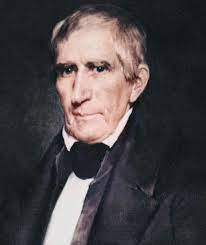
Harrison had been a successful general for the United States, but that wasn’t the only political involvement he had. In December of 1834, the Pennsylvania Intelligence suggested that General Harrison should run for president and replace the former Democratic president Andrew Jackson. The public opposition towards Jackson had grown during his presidency as he had caused a financial panic after transferring government deposits from the United States Bank to his “pet” state banks. This upset from Jackson was able to give other candidates, like Harrison, a leg up on Democratic candidates. Harrison wasn’t alone in running for president though; Democrat Martin Van Buren had been catching steam with the public and began making strides with his campaign, with the support of Andrew Jackson. Harrison wasn’t so lucky, as the newly-formed Whig party leaders of the East did not like him and he wasn’t supported very much by that party. Despite this, Harrison was able to construct a campaign that people began to entertain by 1836. However this still wasn’t enough to beat Van Buren, who won this presidency by a landslide, triumphing greatly over his opposition. To many, this defeat would lead to a dead end of a goal never achieved. But to Harrison and the Whig party, this was only the beginning. The Whig party had formed in 1833 and it began preparing for the 1840 election as early as 1837 to secure the victory and win the presidency. The Whig party viewed Harrison as a strong candidate and nominated him to run for president, even after deciding to let two other candidates run as Whig candidates as well.2
Harrison’s success as a general was not matched in his first attempt at running for President. Harrison had been a very successful general. He led men to victory at the Battle of Tippecanoe against Native American forces. He was coined the nickname “hero of Tippecanoe” by some Kentucky troops after Harrison’s departure. His successes as a general did not stop there. He also gained more respect and awards after the War of 1812 Battle of the Thames, where he successfully killed the Indian chief Tecumseh.3
William Henry Harrison joined the Whig party, which came about as a protest party against the Democratic party of Andrew Jackson.4 During the year 1837, the Whig party was very successful politically, because of the financial crisis plaguing the country during the presidencies of Jackson and Van Buren. The Whigs wanted to win the presidency in order to get the type of legislation they were wanting, which was very anti-Jacksonian.5 Harrison was set to run with John Tyler, who would take up the vice president position if elected. The Whig party coined the campaign slogan “Tippecanoe and Tyler Too,” which combined Harrison’s success as a general and John Tyler within the same chant.6
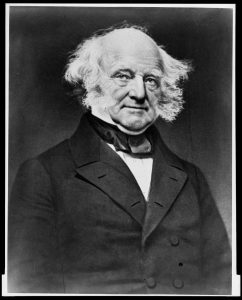
Harrison’s opponent in the 1840 election, Martin Van Buren, was no easy opposition. As an incumbent, Van Buren had many credentials from his first presidency that made him an intimidating presidential candidate to run against. In February of 1821, Van Buren had been elected as a senator from New York, but he resigned in 1827 to become the Governor of New York. While serving as Governor, Jackson appointed him to be a part of his first cabinet as Secretary of State. In 1836, he won his presidency over Harrison and the two other Whig candidates, which further benefited his chances of winning the election of 1840.7
Van Buren’s first presidency began in 1837, but did not go the way anyone would have thought. Shortly after being elected, unemployment swept through the country. This was the result of the Panic of 1837, which caused banks to close their doors and bank depositors to lose large amounts of money. The country fell into a depression, which did not leave a good taste in the mouths of the United States citizens. The Whigs saw this misfortune as fuel to their fire; they would use that fuel to burn down Van Buren in the 1840 election.8
The Democratic party saw the increasing threat to Van Buren’s reelection and wanted to turn the public away from Harrison and the Whig Party. In an attempt to put a stop to Harrison’s ever-growing likeability with the people, the Democratic party devised a way to smear Harrison’s name. They began describing Harrison as a lower-class man and even began spreading the rumor that if someone gave Harrison some hard cider and a settled pension, he would rot away for the rest of his life in a log cabin. Once this smear attempt arose, the 1840 election became famously known as the Log Cabin Campaign. The smear tactic was meant to paint Harrison as beneath the office of president; however, it was perceived as an attack on those of the lower social class. Despite the Democrat’s efforts, the Whig party was able to pull off something that would change the trajectory of the election and the rest of American presidential elections to follow. The Whig party was successful in manipulating the slander thrown at Harrison and made it actually backfire on Martin Van Buren.9
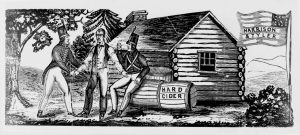
The social class that the Democrats were trying to tarnish Harrison as was actually the majority of voters at that time.9 The Whig party happily embraced the image forced upon Harrison and Tyler by the Democratic party because they realized it made them seem like normal folk. Soon, log cabins began being built for the campaign, coonskin caps started being worn by supporters, and hard cider was freely dispensed to voters.11 Log cabin paraphernalia was created to connect Harrison’s name to the common man.12 The people of this time liked the idea of having a president who was just like them and they believed Harrison and Tyler were just that. Harrison was not a poor “man of the people” at all, but he was able to market himself as one. While lifting the pair above the opposition, the Whigs further separated their candidates from Van Buren. They did this by painting Van Buren as a man of luxury and one who was pompous and elitist, which was not at all the image that Andrew Jackson had been able to construct for his Democrats.9 Van Buren’s new public identity imposed by the Whigs turned voters away from him even more than before. His smear campaigned had truly backfired.
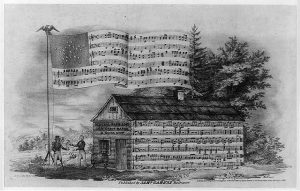
The uproar that was created by the log cabin campaign overpowered the Democrats trying to address the qualifications and polices between the two opponents.12 Before they knew it, it was election time. The time had finally come to see whether Van Buren’s sorry attempt of ripping down Harrison had worked. The votes were in. It was announced that Harrison won the popular vote 1,269,763 to Van Buren’s 1,126,137, and the electoral vote was 254 to 60.15 William Henry Harrison was officially elected president of the United States with John Tyler alongside him as Vice President. The Whigs had earned their precious victory!
Sadly, Harrison passed after a month of being in office, which stunned the nation.16 His sickness could be attributed to the unclean conditions of the nineteenth century.17 Harrison had caught a fever that later developed into pneumonia.17 Despite his death, the Log Cabin campaign was a turning point in American presidential campaign history. Future campaigns focused more on raising more buzz and using more catchy slogans to win elections. Needless to say, William Henry Harrison’s Log Cabin Campaign changed the way American presidential politics would be conducted, and we are still seeing its impact today in modern elections.12
- Jane McHugh and Philip A. Mackowiak, “Death in the White House: President William Henry Harrison’s Atypical Pneumonia,” Clinical Infectious Diseases 59, no. 7 (2014): 990. ↵
- Dorothy Burne Goebel, William Henry Harrison: A Political Biography (Indianapolis: Historical Bureau of the Indiana Library and Historical Dept, 1926), 297-299, 307, 323. ↵
- Dorothy Burne Goebel, William Henry Harrison: A Political Biography (Indianapolis: Historical Bureau of the Indiana Library and Historical Dept, 1926), 140, 188. ↵
- “The Whig Party in the South,” The William and Mary Quarterly 23, no. 1 (1914): 1–5. ↵
- Dorothy Burne Goebel, William Henry Harrison: A Political Biography (Indianapolis: Historical Bureau of the Indiana Library and Historical Dept, 1926), 323. ↵
- Irving Dilliard, “Tippecanoe and Tyler Too!,” in Dictionary of American History, ed. Stanley I. Kutler, 3rd ed., vol. 8 (New York, NY: Charles Scribner’s Sons, 2003), 131. ↵
- W. E. Beard, “THE AUTOBIOGRAPHY OF MARTIN VAN BUREN,” Tennessee Historical Magazine 6, no. 3 (1920): 146–147. ↵
- Roland Sweet, “A Vote for Logs,” Log Home Living 27, no. 10 (December 1, 2010): 24. ↵
- Richard Brookhiser, “William Henry Harrison Showed Rich Presidential Candidates How to Win: Harrison’s Log Cabin Campaign in 1840 Shed Light on a Paradox. People Want Presidents Who Can Lead but Act like They’re Just Folks,” American History 47, no. 2 (June 1, 2012): 22. ↵
- Richard Brookhiser, “William Henry Harrison Showed Rich Presidential Candidates How to Win: Harrison’s Log Cabin Campaign in 1840 Shed Light on a Paradox. People Want Presidents Who Can Lead but Act like They’re Just Folks,” American History 47, no. 2 (June 1, 2012): 22. ↵
- Irving Dilliard, “Tippecanoe and Tyler Too!,” in Dictionary of American History, ed. Stanley I. Kutler, 3rd ed., vol. 8 (New York, NY: Charles Scribner’s Sons, 2003), 131. ↵
- Robert North Roberts, Scott John Hammond, and Valerie A. Sulfaro, eds., “Log Cabin and Hard Cider,” in Presidential Campaigns, Slogans, Issues, and Platforms: The Complete Encyclopedia, vol. 1, Slogans, Issue, Programs, Personalities, and Strategies (Santa Barbara, CA: Greenwood, 2012), 270. ↵
- Richard Brookhiser, “William Henry Harrison Showed Rich Presidential Candidates How to Win: Harrison’s Log Cabin Campaign in 1840 Shed Light on a Paradox. People Want Presidents Who Can Lead but Act like They’re Just Folks,” American History 47, no. 2 (June 1, 2012): 22. ↵
- Robert North Roberts, Scott John Hammond, and Valerie A. Sulfaro, eds., “Log Cabin and Hard Cider,” in Presidential Campaigns, Slogans, Issues, and Platforms: The Complete Encyclopedia, vol. 1, Slogans, Issue, Programs, Personalities, and Strategies (Santa Barbara, CA: Greenwood, 2012), 270. ↵
- Gayle Thornbrough, review of Review of The Log-Cabin Campaign, by Robert G. Gunderson, Indiana Magazine of History 55, no. 2 (1959): 184. ↵
- Richard Carwardine, “Evangelicals, Whigs and the Election of William Henry Harrison,” Journal of American Studies 17, no. 1 (1983): 74. ↵
- Jane McHugh and Philip A. Mackowiak, “Death in the White House: President William Henry Harrison’s Atypical Pneumonia,” Clinical Infectious Diseases 59, no. 7 (2014): 990. ↵
- Jane McHugh and Philip A. Mackowiak, “Death in the White House: President William Henry Harrison’s Atypical Pneumonia,” Clinical Infectious Diseases 59, no. 7 (2014): 990. ↵
- Robert North Roberts, Scott John Hammond, and Valerie A. Sulfaro, eds., “Log Cabin and Hard Cider,” in Presidential Campaigns, Slogans, Issues, and Platforms: The Complete Encyclopedia, vol. 1, Slogans, Issue, Programs, Personalities, and Strategies (Santa Barbara, CA: Greenwood, 2012), 270. ↵
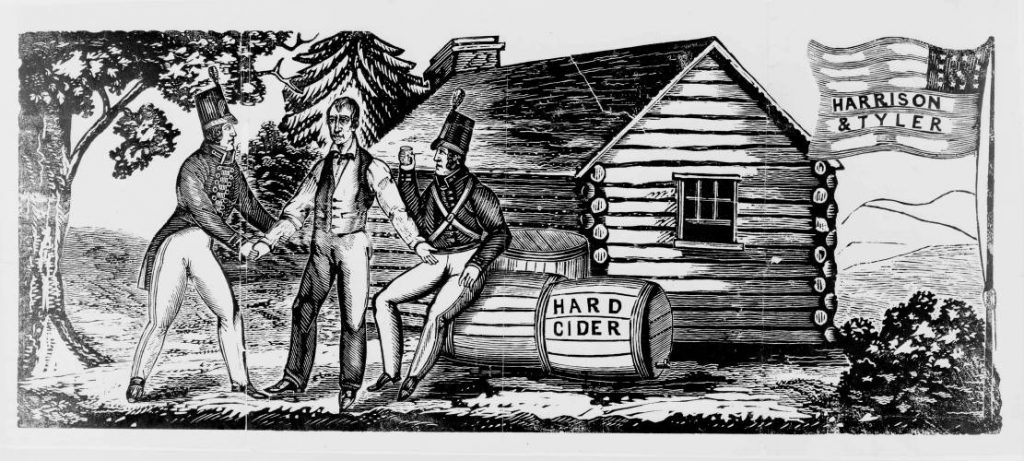
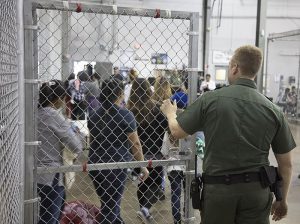
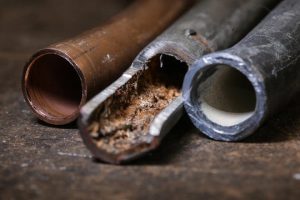
4 comments
Madison Hinojosa
You presented the topic of the article with such mastery, effortlessly conveying detailed information that captivated and engaged the audience. Your dedication to delivering quality content is commendable, and your approach to enlightening readers was both informative and captivating. Your talent in making intricate concepts accessible while maintaining a high level of engagement is truly extraordinary and greatly appreciated.
Eugenio Gonzalez
The article was informative, with a compelling narrative that maintains the reader’s attention with William Henry Harrison’s campaign. Before reading the article, I did not know about Harrison’s ”log cabin” campaign and his slogan ” Tippecanoe and Tyler too”. I find it interesting the Democrat campaign toward William Henry Harrison but never expected that it would backfire as the rumor they fabricated helped Harrison with his campaign.
Barbara Ortiz
I enjoyed reading your article on William Henry Harrison and his campaign. I remember the slogan “Tippecanoe and Tyler Too” from my high school US History class and his short term in office. I did not remember covering the “log cabin” slander attempted by the Democratic Party that would eventually backfire against them and help lead the Whig Party to a resounding victory.
Mark Gallegos
This is a very informative article about a president I knew nothing about, and it’s clear a lot of research was done for this topic. You did a great job of writing this story in a clear manner. Although Harrison never got to reap the benefits of his victory over Van Buren, his clever campaigning has been cemented into American politics.